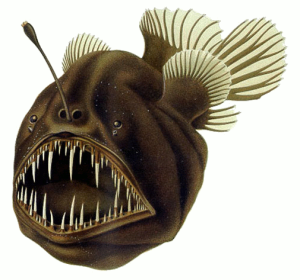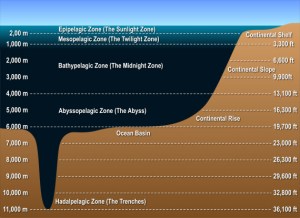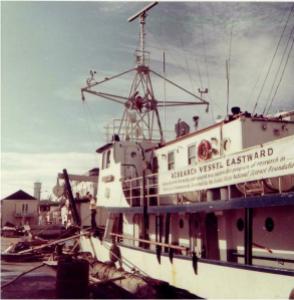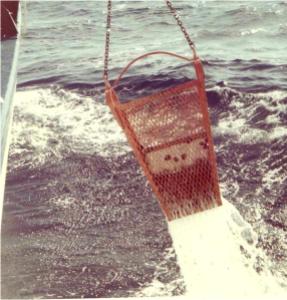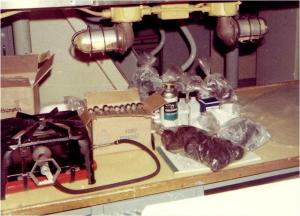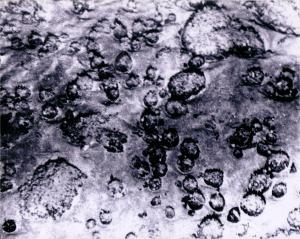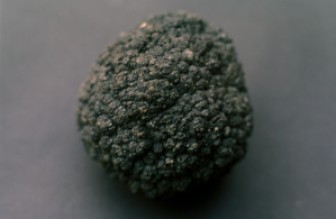A December, 2019 article in the New York Times has the catchy headline, “Bubble Subs Arise, Opening Eyes to the Deep Sea.”
From my perspective, it’s always great when anything about the deep sea attracts the attention of major newspapers. In general, well researched and written publications on the subject are hard to find. A happy exception is biologist Bill Streever’s latest book, In Oceans Deep.
Streever’s excellent book has much to say about free diving, Navy diving, and even one-atmosphere diving suits (wearable submarines, if you will.)
But back to the NYT. William Broad’s article on mini-submarines is both colorful and informative. I urge you to read it if you have even the slightest interest in the undersea world.

However, just as the title of this blog post is deliberately hyperbolic, tongue in cheek, the NYT article is a bit misleading. Just because the technology may be new to the New York Times, it doesn’t mean it’s truly new. Bubble Subs have not actually risen of late. They, and the concepts behind them, have been around for a long time.
To prove my point, this blog post republishes the most interesting parts of an article I penned in the Georgia Tech Engineer way back in 1967. It’s called The Depth Challenger. The article is a little technical, which is the norm for an engineering school magazine, but it was also written to appeal to a diverse student body.


The article begins with a short piece of descriptive prose.

A brittle star, its arms twitching, spreading across the firm, grey mud, stops as a tracking light sweeps over and beyond it. An instant later the light returns and fixes on the animal as the whirring bubble slides in close overhead. The sphere hovers briefly then moves off, circling, finally disappearing below a canyon rim. When minutes later the bubble settles to rest on the soft canyon floor, cameras clicking, the two men inside sit gazing, peering, with four miles of water above their heads. These men are new frontiersmen – the oceanographers.
One of the greatest problems preventing our full utilization of the ocean’s potential is the inability of re search devices to withstand the enormous pressures exerted by deep water. At four thousand feet, the sea exerts one ton of pressure on each square inch of surface. At thirty-five thousand feet, the pressure is more than seven and a half tons per square inch. To date, nothing has been developed with the ideal requirements of 1) withstanding deep sea pressure, 2) containing man for extended periods of time, and 3) enabling direct visual observation. However, a solution to these problems may soon be met by glass submarines. H. A. Perry, research materials engineer at the Naval Ordnance Laboratory of Silver Springs, Maryland, is currently researching the feasibility of transparent submarine hulls. Perry states that glass provides a unique degree of buoyancy and safety in deep submergence hulls.
To test his original hypothesis, Perry and other NOL scientists set sail in 1964 aboard the Navy research vessel Gillis with a cargo of 95 hollow spheres provided by Corning Glass Works and the Pittsburgh Plate Glass Company. Once over the Puerto Rico trench, these spheres were lowered to depths of 300, 7000, 1400 and 2100 feet. Pentolite-charges were set a fixed distance away and detonated. If no leakage of the sphere occurred, the charges were moved closer until the glass finally failed. At this point, a “critical distance” was defined. As depth increased, the compressive strength of the glass also increased. With metal hulls, the results are just the opposite.
(As a side note, a few years later I set sail on the same vessel, by then renamed the RV Gillis, for a research cruise to the Puerto Rico Trench.)
Apparently, the deeper a glass submarine dives, the safer are its occupants; that is, down to an optimum depth of about 21,000 feet where the compressive strength diminishes until buckling finally occurs at a theoretical depth of 55,000 feet. However, the deepest part of the ocean, the Challenger Deep, is a trench descending to only 35,888 feet, so the theoretical limit for glass spheres poses no problem. It will be noted, though, that the compressive strength of conventional spheres at relatively low pressures is in itself rather low. The chances of a mariner surviving an accidental collision on down to a depth of several hundred feet is nil. Obviously, there is a need for either foolhardy scientists or “pre-compressed hulls.”

The full article with illustrations can be read here.
Bubble-Sub-1In my opinion, the epitome of bubble submarines has been the Johnson Sea Link, pictured here. This revolutionary bubble submarine started operations in 1971, with upgrades in 1972, just a few years after I got wind of it.




